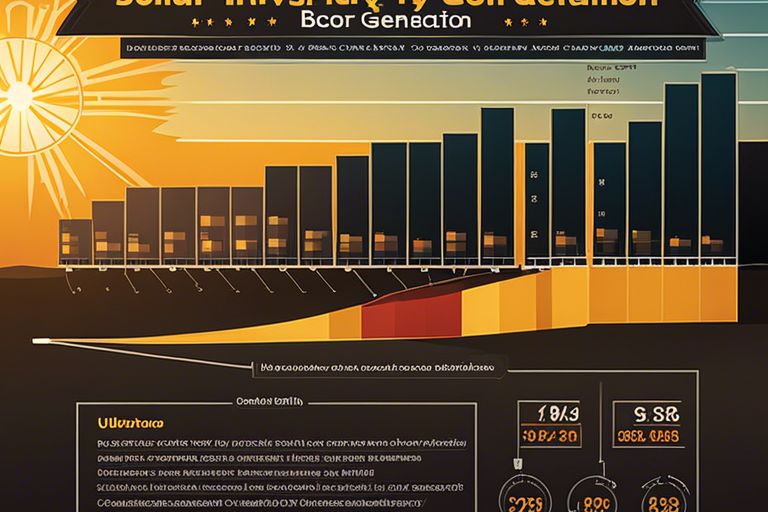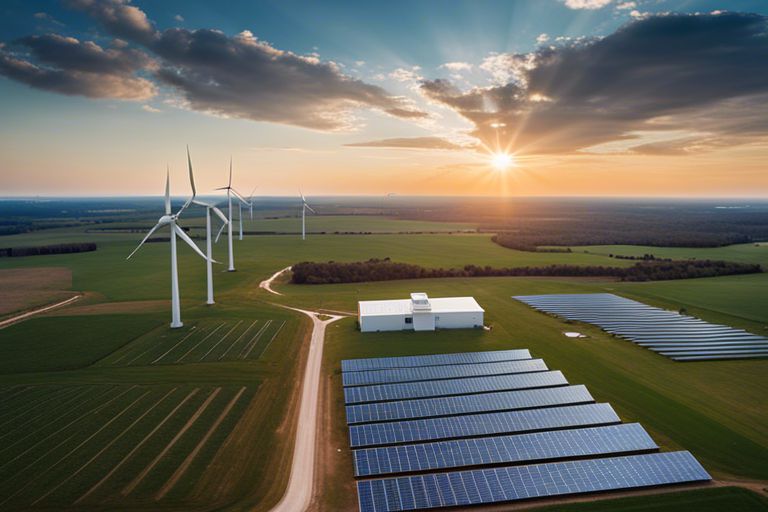Many Oklahomans are wondering if solar installations are finally outpacing coal in the state’s electricity generation. As the world shifts towards cleaner energy sources, Oklahoma’s energy landscape is also witnessing significant changes. In this blog post, we will explore into the latest data and trends to determine whether solar power is indeed on the brink of overtaking coal in generating electricity in the Sooner State, discussing the implications of this shift for the environment, economy, and energy sector.
Key Takeaways:
- Solar Installations Surpassing Coal: Solar installations are on the rise in Oklahoma, overtaking coal in electricity generation.
- Renewable Energy Trend: The shift towards solar energy reflects a growing trend towards renewable energy sources in the state.
- Cleaner Energy Options: Solar energy offers a cleaner and more sustainable alternative to coal, reducing carbon emissions and environmental impact.
- Economic Benefits: The expansion of solar installations can bring economic benefits such as job creation and energy cost savings.
- Policy Implications: The shift towards solar energy highlights the importance of supportive policies and incentives for renewable energy development in Oklahoma.
The Rise of Solar Energy in Oklahoma
Recent Growth in Solar Installations
Little by little, solar energy is making its mark in Oklahoma’s electricity generation landscape. The state has seen a significant increase in solar installations in recent years, signaling a shift towards cleaner and renewable energy sources. According to recent data, solar installations have been surpassing coal in Oklahoma’s electricity generation, indicating a positive trend towards sustainability.
Advancements in Solar Technology
Energy efficiency and cost-effectiveness are key drivers behind the advancements in solar technology. Innovations such as solar panels with higher conversion rates, energy storage solutions, and smart grid integration have revolutionized the industry. These advancements have not only made solar energy more accessible but also more reliable, positioning it as a formidable competitor to traditional fossil fuels.
Plus, the environmental benefits of solar energy cannot be overstated. By harnessing the power of the sun, we can significantly reduce greenhouse gas emissions and combat climate change. The state of Oklahoma stands to benefit greatly from these advancements in solar technology, paving the way for a more sustainable future.
The Decline of Coal in Oklahoma
Environmental and Economic Factors
Some key factors contributing to the decline of coal in Oklahoma are the growing awareness of environmental impacts and the economics of renewable energy. As concerns over climate change and air pollution increase, there is a shift towards cleaner forms of energy production. Additionally, the declining costs of solar installations and the abundance of sunlight in the state make solar power an attractive alternative to coal.
- Environmental impacts are a major concern for communities affected by coal mining and power plants.
- The cost-effectiveness of solar installations is making them a more desirable option for electricity generation.
- Solar power has the potential to reduce carbon emissions and improve air quality in the region.
Assume that these factors continue to drive the transition away from coal and towards renewable energy sources in Oklahoma.
Policy and Regulatory Changes
On a legislative level, policies promoting renewable energy and regulations aimed at reducing carbon emissions are playing a significant role in the decline of coal in Oklahoma. The state government’s support for initiatives like tax credits for solar installations and emissions trading programs is incentivizing the shift towards cleaner energy sources.
The implementation of stricter emissions standards and the phase-out of coal subsidies are also contributing to the decline of coal in the state. The establishment of renewable portfolio standards is further encouraging the adoption of solar and wind power.

Comparative Analysis
| Cost Efficiency: Coal | Solar |
| Price per unit | Installation cost |
| Maintenance costs | Operational expenses |
| Environmental impact | Sustainability benefits |
Cost Efficiency: Coal vs. Solar
To evaluate the cost efficiency between coal and solar energy generation, we need to consider various factors. Coal has historically been a cheaper source of energy due to the abundance of coal mines. However, the installation cost and ongoing maintenance costs of coal-fired power plants can be significant. On the other hand, solar energy relies on renewable resources and has seen a decrease in installation costs over the years, making it a more cost-efficient option in the long run.
Impact on Employment and Economy
With the shift towards solar installations over coal in Oklahoma’s electricity generation, there has been a noticeable impact on employment and the economy of the state. A renewable energy sector creates new job opportunities in fields such as engineering, installation, and maintenance of solar panels. This not only boosts the local economy but also reduces reliance on fossil fuels, leading to a sustainable future.

Challenges and Opportunities
Grid Integration and Energy Storage
Opportunities for enhancing grid integration and energy storage in Oklahoma’s solar sector are abundant. As solar installations increase, the need for effective grid integration and energy storage solutions becomes more pressing. Investing in technologies such as smart grids, advanced forecasting tools, and battery storage systems can help optimize the use of solar energy and ensure grid stability even during periods of low sunlight.
Future Prospects for Solar Energy
Opportunities for the future of solar energy in Oklahoma look promising. With advancements in technology and decreasing costs, solar power is becoming increasingly competitive with traditional energy sources. The state has the potential to significantly expand its solar capacity and reduce its reliance on coal, contributing to a cleaner and more sustainable energy future.
Another crucial aspect to consider in the future prospects for solar energy in Oklahoma is the importance of policy support. State-level incentives, regulations, and initiatives can play a significant role in driving the growth of the solar industry and accelerating the transition to renewable energy sources.
Final Words
Following this analysis of the current trends in Oklahoma’s electricity generation, it is evident that solar installations are indeed on track to surpass coal in the state. With advancements in technology, decreasing costs, and a growing demand for cleaner energy sources, solar power is becoming increasingly competitive in the energy market. Oklahoma’s abundant sunlight makes it a prime location for solar installations, and the state has already witnessed a significant increase in solar capacity. As more investments are made in solar energy and existing coal plants retire, it is likely that solar will continue to play a larger role in Oklahoma’s electricity generation in the years to come.
FAQ
Q: Are Solar Installations Surpassing Coal In Oklahoma’s Electricity Generation?
A: Yes, solar installations are surpassing coal in Oklahoma’s electricity generation. The state has seen a significant increase in solar capacity in recent years, making it a key player in the shift towards renewable energy sources.
Q: What factors have contributed to the growth of solar installations in Oklahoma?
A: Several factors have contributed to the growth of solar installations in Oklahoma, including declining costs of solar technology, state and federal incentives, and increasing environmental awareness driving demand for clean energy sources.
Q: How does the cost of solar compare to coal in Oklahoma?
A: The cost of solar has become increasingly competitive with coal in Oklahoma, with solar technology prices dropping significantly in recent years. This cost competitiveness has made solar a more attractive option for electricity generation in the state.
Q: What are the environmental benefits of solar installations over coal in Oklahoma?
A: Solar installations offer significant environmental benefits over coal in Oklahoma, including lower carbon emissions, reduced air and water pollution, and conservation of natural resources. Switching to solar helps combat climate change and improves overall air quality.
Q: How does the reliability of solar compare to coal in Oklahoma?
A: Solar energy is becoming increasingly reliable in Oklahoma with advancements in technology. While coal has historically been seen as a more reliable energy source, improvements in solar storage and grid integration have made solar an equally dependable option for electricity generation in the state.
Q: What role do policies and regulations play in the growth of solar installations in Oklahoma?
A: Favorable state policies and regulations have played a crucial role in the growth of solar installations in Oklahoma. Supportive measures such as renewable energy standards, tax incentives, and net metering have incentivized investment in solar energy and facilitated its rapid expansion in the state.
Q: What does the future hold for the solar industry in Oklahoma?
A: The future of the solar industry in Oklahoma looks promising, with continued growth expected as technology advances and costs continue to decline. As the state strives to meet renewable energy targets and reduce carbon emissions, solar is poised to play an increasingly significant role in Oklahoma’s electricity generation landscape.




